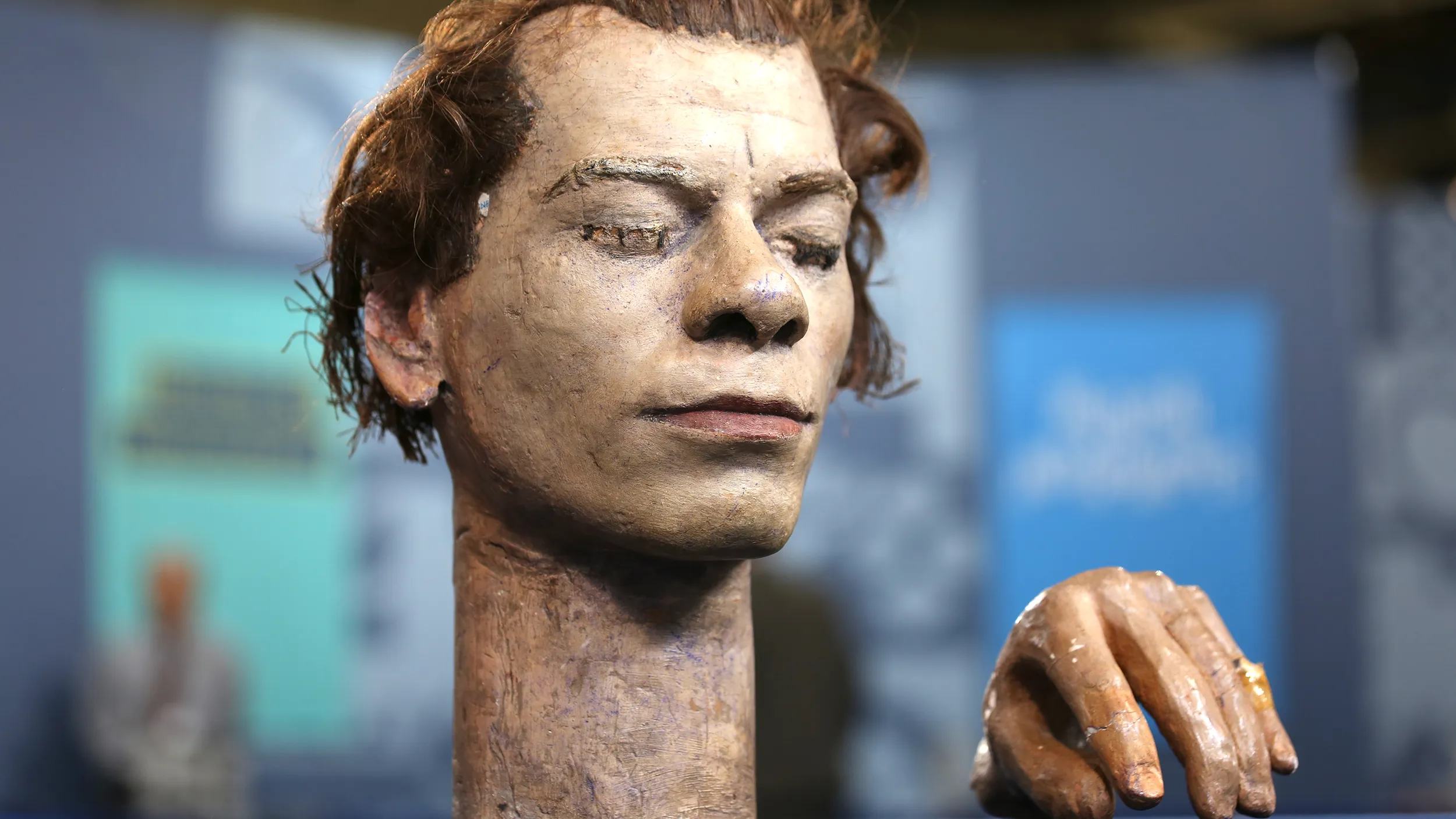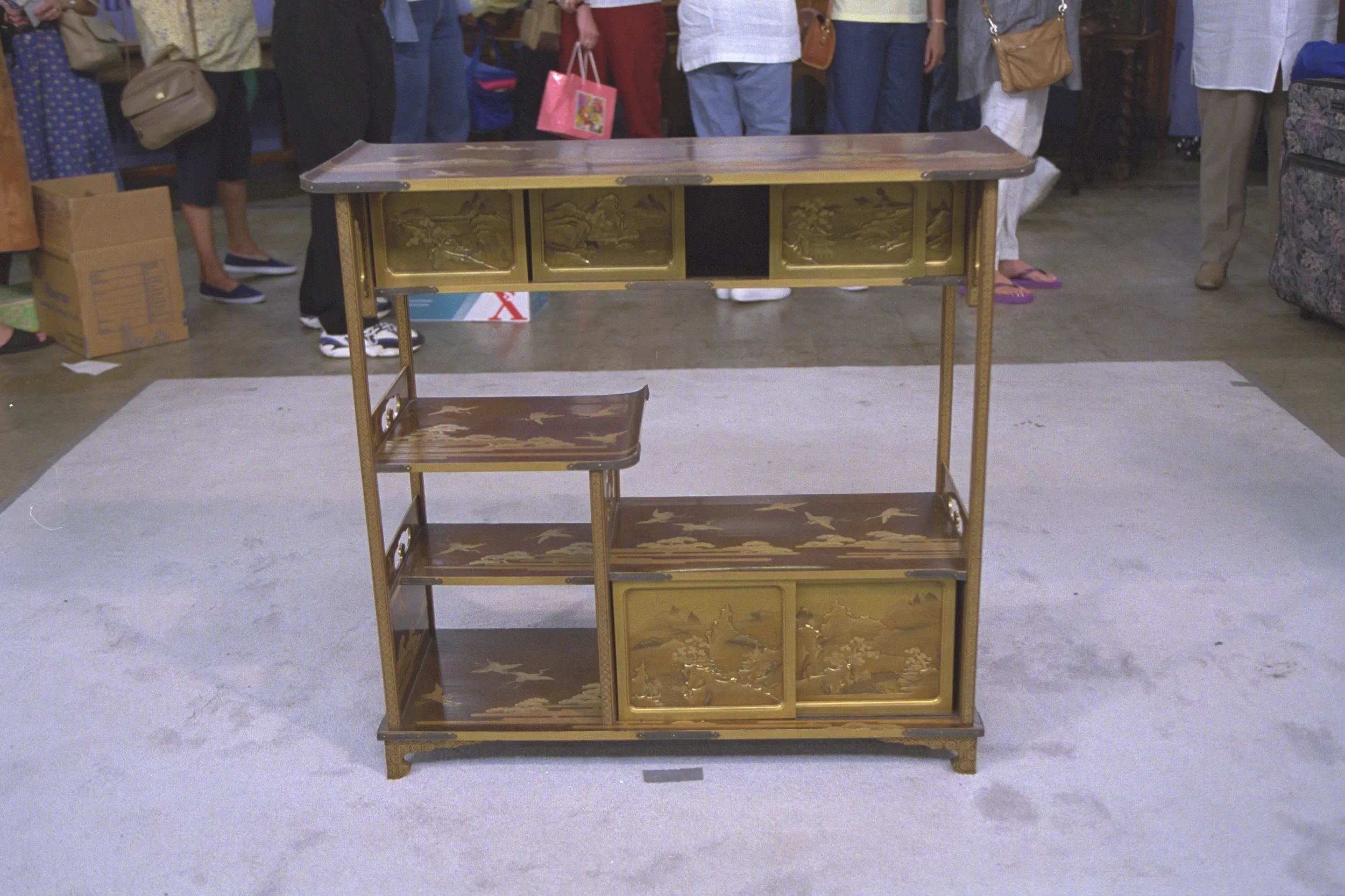GUEST: To the best of my knowledge, it was purchased in New York, when my father took a trip there. Maybe the late 1950s.
APPRAISER: There was an abundance of ethnographic Asian works of art being offered in New York. Did he happen to mention what he may have paid for the object?
GUEST: No.
APPRAISER: Do you know what it's made of or from? Its composition?
GUEST: Red lacquer, I understand, is paint of some sort. That's about the extent of what I know.
APPRAISER: It's a sap, it's a resin. It's an organic material that derives from a plant, and this resin or lacquer has been used in China for centuries. There's lacquerware going back 5,000 years in the Neolithic period. The red lacquer, or what people today describe as cinnabar lacquer, which this object is, started in around the 12th century. So we see an object like this, we start to look at its size, its composition, the iconography involved in decoration, and that will point us into a direction of age. 18th century examples are usually quite diminutive in form. They're very highly carved. The carving detail does incorporate figural cartouches. But often there were dragons, often they were more of a symbolic nature. As we got into the 19th century, sort of about 1820 to about 1850, we started to see larger proportions and more figural cartouches and more floral grounds. This is very large for cinnabar lacquer. It takes at minimum 20 to 35 layers of sap, at most 200. And then carved. So, it's remarkable to think this has been built up, built up, built up, and then carved, in very good detail.
GUEST: Yes.
APPRAISER: And this is really an early to mid 19th century example. The quality starts to really go downhill as you get into late 19th, early 20th century examples. And as we look at some of the decoration, these figural cartouches are very, very common in the 19th century. I quite like the figural cartouche up here of the drunken poet or drunken scholar. He has an attendant with a wine pot, and he's recumbent in the afternoon sun. These four cartouches are quite-- quite common. You have another scholarly gentleman with antiques, writing, also with an attendant. So these are kind of that bridge between 18th century scholarly objects to more 19th century merchant class, wealthy, opulent proportions, opulent objects. So that wealthy, 19th century class would have owned this in China. This is almost certainly on a wood carcass.
GUEST: Okay.
APPRAISER: 20th century examples are manmade or organic resin put on tin metal or copper. The condition's fabulous. You only have one, correct?
GUEST: That's correct.
APPRAISER: This almost certainly had a mate when it started life. So it would have been a pair. In a retail setting, it would probably sell for around $15,000.
GUEST: $15,000. That's amazing. It really is. It would be nice to find its mate.
APPRAISER: Good luck.
GUEST: (laughing) Yes indeed!





